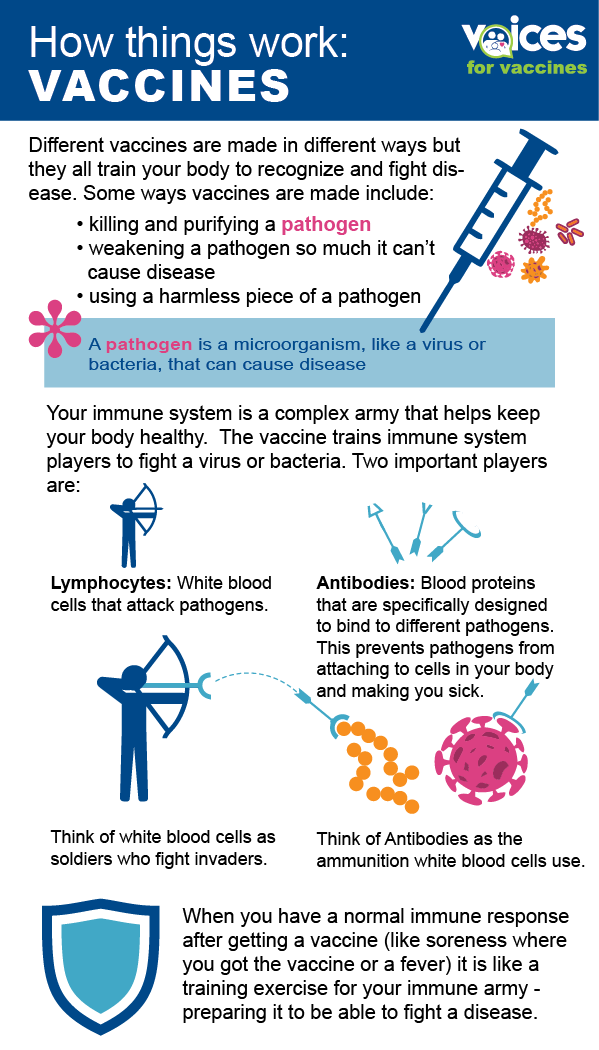How Vaccines Work
Vaccines are one of science and public health’s biggest success stories in the last century but how they work can sometimes be a bit of a mystery. On this page we provide an overview of the immune system and how vaccines work with it to protect us from some of the most serious and deadly diseases. We also cover a brief, but spectacular history of vaccines in our vaccine toolkits.
The Immune System
The immune system is made up of different types of cells and organs that together create a sophisticated army that protects your body from bacteria, viruses, fungi, and parasites that can make you sick. Your immune system encounters and protects you from thousands of “invaders” every day. And every time it encounters a new invader, it learns to recognize it so that it can quickly combat it in the future. This is called immunity.
There are several types of immunity:
- Innate: The immunity you are born with. A great example of this is your skin that blocks germs from entering your body.
- Adaptive: The immunity you develop throughout your life. You get adaptive immunity by either being exposed to a disease or by being vaccinated for it.
- Passive: The immunity you borrow for a short time. Babies have passive immunity to a number of pathogens from the breastmilk that nourishes them. This immunity is temporary but offers some protection early in their life.
Your immune system is on guard 24 hours a day, killing invaders without you even knowing it. But sometimes a bacterium, virus, or other invader can replicate in your body faster than your immune system can kill it. When that happens, you get sick. Most pathogens (any organism that can cause disease) will only cause minor illness but depending on the pathogen it can cause serious illness, permanent damage, or even death. It is these serious diseases that vaccines protect against.
Herd Immunity
There are some people who cannot get vaccinated and for whom a disease could be serious or even deadly. Depending on the vaccines these people can include:
- Young babies
- People with weak immune systems (like those undergoing cancer treatment or who have an immune disease)
- Older adults
These people rely on herd immunity to keep them safe. Herd immunity is when enough people in a community are immune to a disease that they “shield” those who don’t have immunity from getting the disease. This immunity can come from the disease itself but that means that a lot of people got sick. It’s much safer for the immunity to come from vaccination.
In order for herd immunity to work, most of the community needs to be immune. Percent of a community that has to be immune for herd immunity to work varies on the disease:
By vaccinating we not only protect ourselves but we also tell our community that we care enough to help protect the most vulnerable in it. You can learn more about herd immunity in our community immunity toolkit.
Length of Vaccine Protection
During vaccine development research, one of the things scientists learn is how long a vaccine gives us protection. While immunity can be lifelong, in some cases it is not permanent. Some immunity wanes over time and so there are certain vaccines we need to continue to get throughout our lifetime like the tetanus vaccine.
The flu vaccine needs to be given each year because the influenza virus mutates all the time. So the flu virus the vaccine taught your body to recognize and fight last year may not be the same one circulating this year.
How do I know this information is credible?
We work for parents so we make sure that parent concerns are addressed using facts and science and our content is reviewed by experts who have spent their careers studying vaccines. Learn more about how we ensure we are bringing you the best information to help you make healthy choices for your family.

